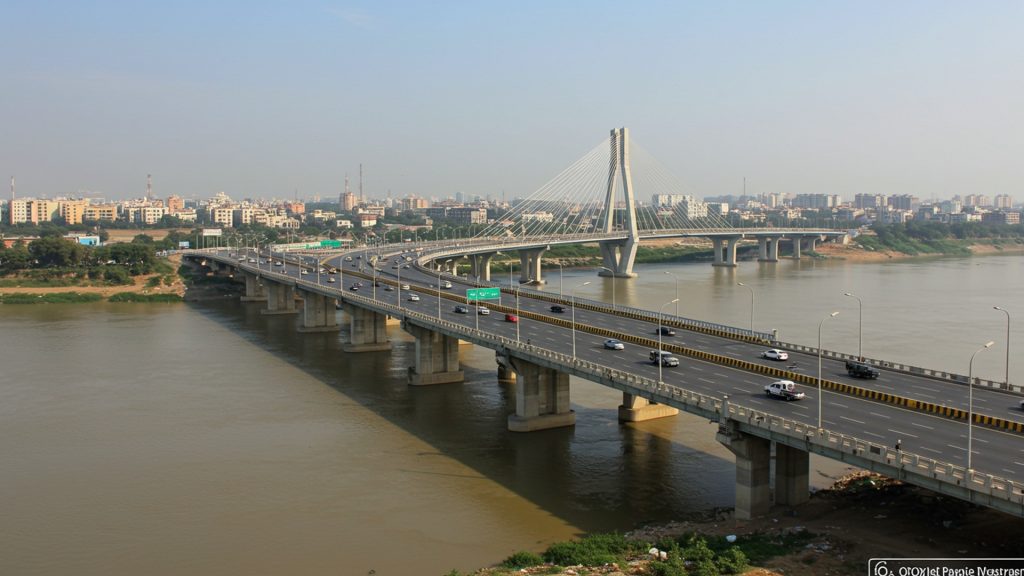A new era of travel and connection is about to begin for common people in Bihar as big road and bridge projects near their finish lines. These large building efforts, spread across the state, will soon make it much faster and easier for people to move around and get goods to market. With work almost done on key roads and crossings, residents can look forward to quick access to crucial places, ending long waits and making daily life better. This big step forward promises a new way for the state to grow, opening doors for trade and brighter futures for many.
Better Connections Across the State
Bihar is seeing a big push in its building projects, with many vital roads, bridges. airports getting close to being finished. These efforts are set to make travel easier and faster for people and goods across the state. The goal is to improve how different parts of Bihar are linked, helping daily life and business grow. Many of these projects are part of a larger plan to make the state’s travel network strong and modern. Officials are working hard to complete these projects on time, bringing new ways for people to move around. The ongoing work shows a clear focus on making Bihar more connected than ever before. This includes building new routes and making old ones better, all to serve the growing needs of the people. The state has committed significant funds to these projects, showing a strong desire to improve things on the ground. This widespread building activity means better access to markets, schools, hospitals. other crucial places for everyone in Bihar.
New Bridges Over Rivers
One major achievement is the completion of the Aunta–Simaria Bridge on National Highway-31. This is a 6-lane bridge, about 8. 15 kilometers long, built at a cost of around 1,871 crore rupees. This new bridge helps reduce travel time by about 150 kilometers, especially for trucks and heavy vehicles going between North and South Bihar. It also takes pressure off the older Rajendra Setu bridge, making traffic flow smoother.
Another big project, the Kacchi Dargah-Bidupur 6-lane bridge, is almost ready. This bridge, which crosses the Ganga River, is set to be one of Asia’s longest extra-dosed cable bridges, stretching 19. 76 kilometers in total, with the main bridge section being 9. 76 kilometers. Parts of this bridge, from Kacchi Dargah to Raghopur, are expected to open soon, with the full bridge likely to be operational by the end of the year. This bridge will greatly improve how North and South Bihar are connected.
Other bridge projects are also moving forward. There is a 6-lane bridge being built between Dighwara in Saran and Sherpur in Patna, which will be connected to the upcoming Patna Ring Road. Plans also include a 6-lane bridge next to the JP Setu and a 4-lane bridge alongside the Mahatma Gandhi Setu. Also, a cable suspension bridge over the Punpun river in Patna, designed to look like Rishikesh’s Laxman Jhula, is approved and will improve local travel and tourism.
Expanding Air Travel
Bihar is also making big steps in air travel. The state cabinet has given approval for six new airports to be built in Madhubani, Birpur in Supaul, Munger, Valmiki Nagar in Bettiah (West Champaran), Muzaffarpur. Saharsa. These airports will be part of the national UDAN scheme, which aims to make air travel more common. The state has set aside 150 crore rupees for this, with 25 crore rupees for each airport.
These new airports will add to the three existing ones in Patna, Gaya. Darbhanga. In the coming years, two more major airports, in Purnia and Bihta, are expected to become active. Services from Purnia Airport are likely to start soon, while Bihta airport is expected to be ready by December 2027. The goal is to have a total of 12 functional airports in Bihar, both big and small, to make sure there is an airport within 200 kilometers of any town in the state.
For Gaya Airport, a CAT-I lighting system is being installed. This modern technology will allow planes to land and take off safely even in bad weather like fog, making Gaya an airport that can operate all year.
Better Roads for Easier Travel
Major road projects are also changing the way people travel in Bihar. The 4-laning of the Patna–Gaya–Dobhi highway (NH-122) has been started. The Patna-Arrah-Sasaram Corridor (NH-119A) is another crucial project, spanning 120. 10 kilometers. This 4-lane road will connect Patna with the upcoming Bihta Airport, Sasaram. main railway stations. It will also link directly to the Patna Ring Road, helping reduce traffic jams.
Several other highway projects are also being worked on or planned:
- The Muzaffarpur Bypass is expected to be finished by February 2025.
- The Bakhtiyarpur-Mokama National Highway, a 4-lane route, is also scheduled for completion by February 2025.
- The Saristabad-Nathupur 4-lane road is expected to be ready by June 2025.
- The Ashok Rajpath Double-Decker Flyover in Patna is expected to be completed by March 2025.
- The Patna-Purnia Expressway, a proposed 6-lane highway spanning 282 kilometers, has been approved. This project, costing 18,042 crore rupees, is expected to cut travel time between Patna and Purnia from 7 hours to about 3. 5 hours. Construction for this is likely to begin in 2027 and be open by mid-2029.
- Rural roads are also being improved, with 4,000 kilometers of roads being built across 26 districts under the Mukhya Mantri Gram Sampark Yojana, supported by the New Development Bank.
Improving Rail Lines
The railway network in Bihar is also seeing many updates. A total of 55 railway projects, which include building new lines, changing track sizes. adding more tracks, are currently underway at different stages. These projects cover a total length of 5,064 kilometers and cost 79,356 crore rupees. One specific project involves laying a new 67. 4-kilometer railway line between Muzaffarpur and Darbhanga, which has completed its final survey work.
Also, work is progressing on track doubling for the Narkatiaganj-Raxaul-Sitamarhi-Darbhanga and Sitamarhi-Muzaffarpur routes, covering 256 kilometers. These projects, costing 4,553 crore rupees, will directly connect 1. 2 million people in 168 villages and improve the movement of both passenger and goods trains. The Neora-Daniyawan and Barbigha-Sheikhpura new railway line project has already reached 67. 46% physical completion, aiming to reduce the load on the Patna-Kiul Mainline.
The government has also approved eight new railway projects, totaling 900 kilometers, which will improve rail access and make travel easier across Bihar and other nearby states. These are expected to be finished by 2030-2031.
Broader State Improvements
Beyond roads, bridges. airports, other major projects are set to boost Bihar’s overall growth. The Kosi-Mechi Intra-State Link Project has been approved, with a cost of 6,282. 32 crore rupees. This project aims to bring irrigation to 2. 10 lakh hectares of farmland in four eastern districts: Araria, Purnea, Kishanganj. Katihar, with completion expected by March 2029. This will significantly help farmers and boost the agricultural economy in these areas.
The Patna Metro system is also under construction, with its first phase expected to start operations by 2025. This rapid transit system will offer a more comfortable way for people to travel within Patna. An Integrated Manufacturing Cluster (IMC) is planned for Gaya, as part of the larger Amritsar-Kolkata Industrial Corridor project. This industrial area is expected to help bring more factories and jobs to the region, supporting economic growth.
What Officials Say
Bihar’s Chief Secretary Amrit Lal Meena has stated that the state is aiming to have a strong network of roads and is making a big leap in air travel, with a total of six functional large airports expected within the next three years. This is being done to ensure that there is at least one airport within 200 kilometers of any town in the state.
The Road Construction Minister of Bihar, Nitin Nabin, has said that the various road projects cleared by the cabinet will “make an vital contribution to the overall development of the state.”
Railway Minister Ashwini Vaishnaw has noted that 55 railway projects are at different stages of construction in Bihar, with a total length of 5,064 kilometers and a cost of 79,356 crore rupees. He added that the annual budget for railway infrastructure and safety works in Bihar was 8,505 crore rupees for 2023-24, which is about seven times more than in the past.
Chief Minister Nitish Kumar has approved the construction of Greenfield airports in six districts, showing the state government’s broader plan to significantly improve Bihar’s air travel network. Officials believe that better air links will create new economic corridors, cut down travel time. attract investors by making it easier to reach areas that were hard to get to before.

